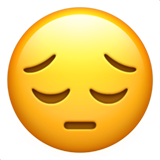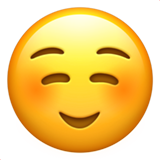Geologic Mapping C
-
Jim_R
- Admin Emeritus

- Posts: 283
- Joined: Sun May 13, 2001 4:22 pm
- Division: Grad
- Has thanked: 0
- Been thanked: 1 time
Geologic Mapping C
Geologic Mapping Wiki
2012 Thread (NY Trial)
2013 Thread (NY Trial)
2014 Question Marathon
2014 Thread
Geologic Mapping Test Exchange 2015
2012 Thread (NY Trial)
2013 Thread (NY Trial)
2014 Question Marathon
2014 Thread
Geologic Mapping Test Exchange 2015
-The path of the Administrator is beset on all sides by the inequities of the selfish and the tyranny of evil men.
-Nothing\'s gonna get deleted. We\'re gonna be like three little Fonzies here. And what\'s Fonzie like? Come on, what\'s Fonzie like?
-Cool?
-Correctamundo. And that\'s what we\'re gonna be. We\'re gonna be cool. Now, I\'m gonna count to three, and when I count three, you let go of your mouse, and back away from the keyboard. But when you do it, you do it cool. Ready? One... two... three.
-Nothing\'s gonna get deleted. We\'re gonna be like three little Fonzies here. And what\'s Fonzie like? Come on, what\'s Fonzie like?
-Cool?
-Correctamundo. And that\'s what we\'re gonna be. We\'re gonna be cool. Now, I\'m gonna count to three, and when I count three, you let go of your mouse, and back away from the keyboard. But when you do it, you do it cool. Ready? One... two... three.
-
hscmom
- Coach

- Posts: 249
- Joined: Wed Mar 03, 2010 8:41 pm
- Division: Grad
- State: CO
- Pronouns: She/Her/Hers
- Has thanked: 1 time
- Been thanked: 2 times
Re: Geologic Mapping C
What compass model are your teams using successfully?
Homeschool Science Colorado since August 2008
-
syo_astro
- Exalted Member

- Posts: 619
- Joined: Sat Dec 03, 2011 9:45 pm
- Division: Grad
- State: NY
- Has thanked: 3 times
- Been thanked: 20 times
Re: Geologic Mapping C
Yeah, I heard people could bring a compass...to be honest, so far I haven't encountered questions where a compass would really be necessary. Whether that be a compass for field geology or a drafting compass (I can't remember which was indicated if at all), I really don't see the need for it. With a drafting compass you could effectively just bring a protractor, stereonet, etc (just listing stuff that involves solving for angles), and with one for the field...I don't know, would they ask you on the spot which direction was north or something? Or asking you parts of your compass? It just doesn't seem to be that big a deal to me, but I could be wrong since I'm not competing anymore >.>.hscmom wrote:What compass model are your teams using successfully?
B: Crave the Wave, Environmental Chemistry, Robo-Cross, Meteo, Phys Sci Lab, Solar System, DyPlan (E and V), Shock Value
C: Microbe Mission, DyPlan (Fresh Waters), Fermi Questions, GeoMaps, Grav Vehicle, Scrambler, Rocks, Astro
Grad: Writing Tests/Supervising (NY/MI)
C: Microbe Mission, DyPlan (Fresh Waters), Fermi Questions, GeoMaps, Grav Vehicle, Scrambler, Rocks, Astro
Grad: Writing Tests/Supervising (NY/MI)
-
JT016
- Member

- Posts: 47
- Joined: Sat Sep 27, 2014 5:43 pm
- Division: C
- State: NY
- Has thanked: 0
- Been thanked: 0
Re: Geologic Mapping C
I'm new to this event and I'm having some trouble understanding the basics.
So I know that a syncline is when the youngest rocks are towards the center, and an anticline is when the oldest rocks are towards the center.
But what is the difference between an antiformal syncline and a synformal syncline? I've been trying to find a good picture but I'm having some trouble.
So I know that a syncline is when the youngest rocks are towards the center, and an anticline is when the oldest rocks are towards the center.
But what is the difference between an antiformal syncline and a synformal syncline? I've been trying to find a good picture but I'm having some trouble.
-
Magikarpmaster629

- Exalted Member

- Posts: 578
- Joined: Tue Oct 07, 2014 3:03 pm
- Division: Grad
- State: MA
- Has thanked: 0
- Been thanked: 1 time
Re: Geologic Mapping C
Hello, I did Road Scholars (Div B event) last year, and I've heard that this event is comparable. How is it different/similar, and will Road Scholars skills be useful here?
Ladue Science Olympiad (2014ish-2017)
A wild goose flies over a pond, leaving behind a voice in the wind.
A man passes through this world, leaving behind a name.
A wild goose flies over a pond, leaving behind a voice in the wind.
A man passes through this world, leaving behind a name.
-
syo_astro
- Exalted Member

- Posts: 619
- Joined: Sat Dec 03, 2011 9:45 pm
- Division: Grad
- State: NY
- Has thanked: 3 times
- Been thanked: 20 times
Re: Geologic Mapping C
It helps to a degree because there is a lot of map reading, and some test makers do ask about topo maps/UTM. But not every test maker does, and there is overall WAY more of a focus on geology and different maps used in geology (along with structural geology). Also, there are no highway maps, and I haven't seen any map drawing. The central focus I think right now of geomaps is to gain a broad understanding of how to utilize different trig techniques and appropriate maps for different situations (ranging from analyzing hazards to going out hiking). If you read the rules, you'd also probably see senses of understanding geologic history and how we can approximate underlying structure (basically the geology) of different locations. All in all, I found it hard, but it was a worthwhile and fun event. To reiterate, topo map skills can be useful for various questions as you might see in the rules, but Road Scholar itself is definitely not completely applicable (as you'll have a bunch of other questions you'll be asked about). I hope that answered your question!Magikarpmaster629 wrote:Hello, I did Road Scholars (Div B event) last year, and I've heard that this event is comparable. How is it different/similar, and will Road Scholars skills be useful here?
B: Crave the Wave, Environmental Chemistry, Robo-Cross, Meteo, Phys Sci Lab, Solar System, DyPlan (E and V), Shock Value
C: Microbe Mission, DyPlan (Fresh Waters), Fermi Questions, GeoMaps, Grav Vehicle, Scrambler, Rocks, Astro
Grad: Writing Tests/Supervising (NY/MI)
C: Microbe Mission, DyPlan (Fresh Waters), Fermi Questions, GeoMaps, Grav Vehicle, Scrambler, Rocks, Astro
Grad: Writing Tests/Supervising (NY/MI)
-
superblackcat
- Member

- Posts: 19
- Joined: Sat Oct 13, 2012 6:13 pm
- Division: C
- State: AZ
- Has thanked: 0
- Been thanked: 0
Re: Geologic Mapping C
Basically, A antiformal syncline is a Syncline (Youngest rock in the middle) That looks like an upside down parabola. (Antiformal). A Synformal Syncline is a syncline (Youngest rock in the middle), that looks like a parabola. (Synformal).JT016 wrote:I'm new to this event and I'm having some trouble understanding the basics.
So I know that a syncline is when the youngest rocks are towards the center, and an anticline is when the oldest rocks are towards the center.
But what is the difference between an antiformal syncline and a synformal syncline? I've been trying to find a good picture but I'm having some trouble.
----- [u]2012-2013[/u] 1st - Gravity Vehicle 2nd - Remote Sensing [u]2013-2014[/u] 1st - GeoMaps : 2nd at Nats. 4th - Scrambler [u]2014-2015[/u] 1st - GeoMaps 1st - IAT 1st - Math Apps [u]2015-2016[/u] 1st - GeoMaps 1st - HydroGeo 1st - IAT 4th - Math Apps
-
elephantower

- Member

- Posts: 97
- Joined: Sat Nov 23, 2013 6:36 pm
- Division: C
- State: AZ
- Has thanked: 0
- Been thanked: 0
Re: Geologic Mapping C
A compass may be good for drawing cross-sections of folds, and maybe some stereonet stuff too.
[S/N]
N/A = didn't compete
2013:
Geologic Mapping: 1, 2
Designer Genes: 3,
Astronomy: N/A,
2014:
Geologic Mapping: 1, N/A
Protein Modelling: 1, N/A
It's About Time: 1, N/A
Forensics: 9, N/A
2015:
Geologic Mapping: 1, ?
Hydrogeology: 1, ?
It's About Time: 1, ?
Forensics: 10, ?
N/A = didn't compete
2013:
Geologic Mapping: 1, 2
Designer Genes: 3,
Astronomy: N/A,
2014:
Geologic Mapping: 1, N/A
Protein Modelling: 1, N/A
It's About Time: 1, N/A
Forensics: 9, N/A
2015:
Geologic Mapping: 1, ?
Hydrogeology: 1, ?
It's About Time: 1, ?
Forensics: 10, ?
-
SpartanOlympians
- Member

- Posts: 12
- Joined: Wed Feb 22, 2012 5:42 pm
- Division: C
- State: TX
- Has thanked: 0
- Been thanked: 0
Re: Geologic Mapping C
Have you guys encountered a lot of stereonet problems? I've done Geologic Mapping for a few years now and have only had a few show up on tests. Do they show up more in Nationals?
Also, anyone have any good links/explanations for doing stereonet problems? Thanks in advance!
Also, anyone have any good links/explanations for doing stereonet problems? Thanks in advance!
Science Olympiad is awesome!!
- Geologic Mapping
- Mission Possible
- Experimental Design
- Geologic Mapping
- Mission Possible
- Experimental Design
-
Atomicbob11
- Member

- Posts: 20
- Joined: Tue Jan 21, 2014 6:26 pm
- Division: Grad
- State: PA
- Has thanked: 0
- Been thanked: 0
Re: Geologic Mapping C
With respect to Nationals, I cannot say. But for most of the tests that I took when I did Geologic Mapping, Stereonets were not widely on test.
In my opinion, I think this largely is due to the amount of knowledge that the test maker might have on them. Unless the test maker is specifically someone who studies stereonets before, they may not know much about them. There are very few to no resources online that have a good questions where there is also an answer that is also easy to fine, which could lead to the small amounts of them. Thus, largely I think most of the questions one would encounter on most Geologic Mapping Tests are questions where you would analyze a stereonet and give the strike and dip (attitude) of a bed.
I have encountered 1 test that has actually involved using tracing paper and graphic beds. Here I was given the Attitude, and was told to trace the bed and then draw the pole. Both of these are relatively simple with practice, but not easy to understand just online. Finding a tutor, possibly a teacher in the school who was a geology major or geoscience major in college might help. Possibly ask local college professors; they may be able to help.
This website, set up by the University of Wisconsin, does will to help you understand the many different ways stereonet questions and concepts could be asked. Obviously, this goes over the basics. Technically with stereonets, you can calculate a lot of different things, including the attitude of intersection points, you can calculate bed thickness with certain data, etc, however simply tracing beds and poles given an attitude is all I would assume you would see. Anything more than that would be difficult.
-University of Wisconsin Website - It has more than just Stereonet help, but very good for those explinations. - https://www.uwgb.edu/dutchs/structge/labman.htm
-Here is an example of much harder stereonet questions. Most of these questions would be answered with stereonets. - http://people.ucalgary.ca/~rundle/page4 ... s-2007.pdf
Again, the 2nd link I provided is above and beyond. Now that I make tests, I would not put something that difficult on a test. Everyone would just skip it and guess at the end and in my opinion is too advanced and out of the range of stereonets for what SciOly is trying to get you to understand. Even the University of Wisconsin website does a lot, and I don't think you would need to know all of it. Mainly just ideas with respect to having to find the attitude or do something with attitude.
Hope this helps!
In my opinion, I think this largely is due to the amount of knowledge that the test maker might have on them. Unless the test maker is specifically someone who studies stereonets before, they may not know much about them. There are very few to no resources online that have a good questions where there is also an answer that is also easy to fine, which could lead to the small amounts of them. Thus, largely I think most of the questions one would encounter on most Geologic Mapping Tests are questions where you would analyze a stereonet and give the strike and dip (attitude) of a bed.
I have encountered 1 test that has actually involved using tracing paper and graphic beds. Here I was given the Attitude, and was told to trace the bed and then draw the pole. Both of these are relatively simple with practice, but not easy to understand just online. Finding a tutor, possibly a teacher in the school who was a geology major or geoscience major in college might help. Possibly ask local college professors; they may be able to help.
This website, set up by the University of Wisconsin, does will to help you understand the many different ways stereonet questions and concepts could be asked. Obviously, this goes over the basics. Technically with stereonets, you can calculate a lot of different things, including the attitude of intersection points, you can calculate bed thickness with certain data, etc, however simply tracing beds and poles given an attitude is all I would assume you would see. Anything more than that would be difficult.
-University of Wisconsin Website - It has more than just Stereonet help, but very good for those explinations. - https://www.uwgb.edu/dutchs/structge/labman.htm
-Here is an example of much harder stereonet questions. Most of these questions would be answered with stereonets. - http://people.ucalgary.ca/~rundle/page4 ... s-2007.pdf
Again, the 2nd link I provided is above and beyond. Now that I make tests, I would not put something that difficult on a test. Everyone would just skip it and guess at the end and in my opinion is too advanced and out of the range of stereonets for what SciOly is trying to get you to understand. Even the University of Wisconsin website does a lot, and I don't think you would need to know all of it. Mainly just ideas with respect to having to find the attitude or do something with attitude.
Hope this helps!
Hard Work may pay off in the long run, but Laziness pays off now.
Therefore, Studying for SciOly is the best type of Procrastination.
Therefore, Studying for SciOly is the best type of Procrastination.

